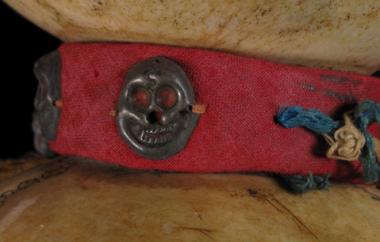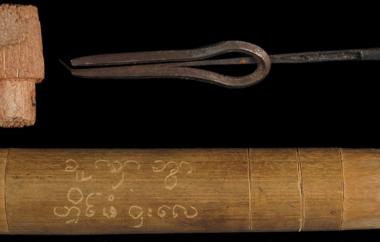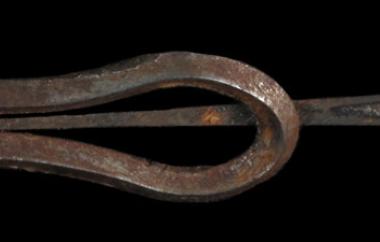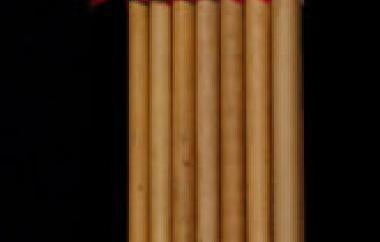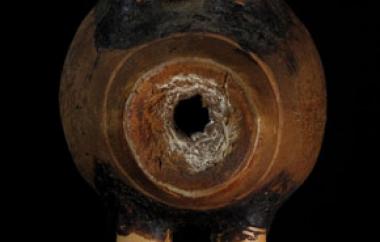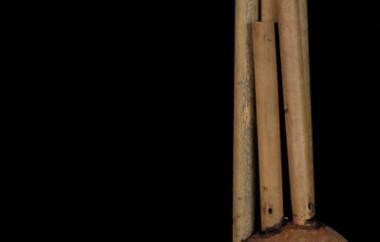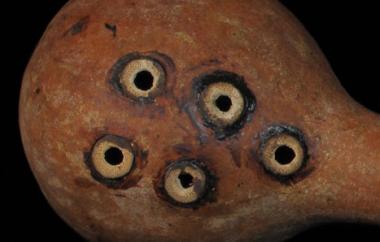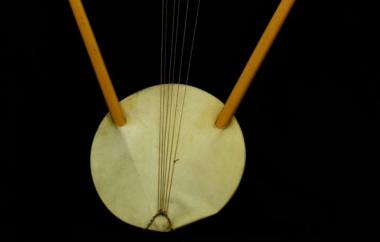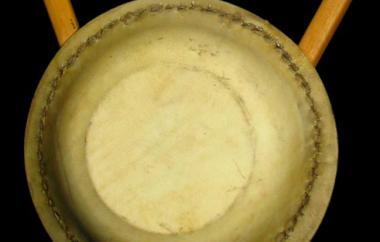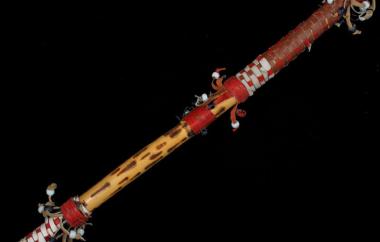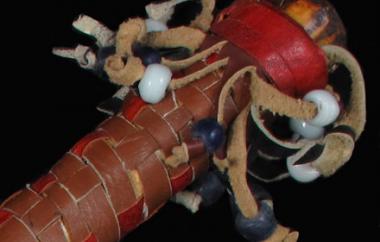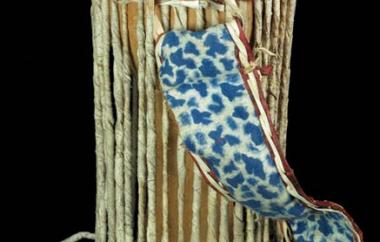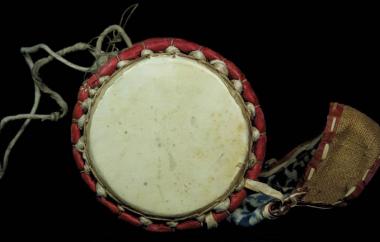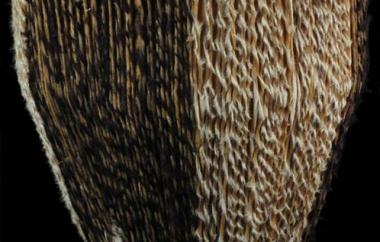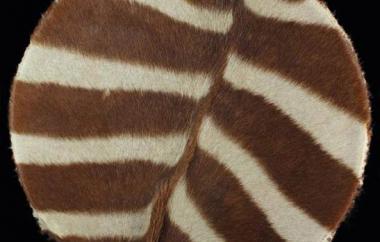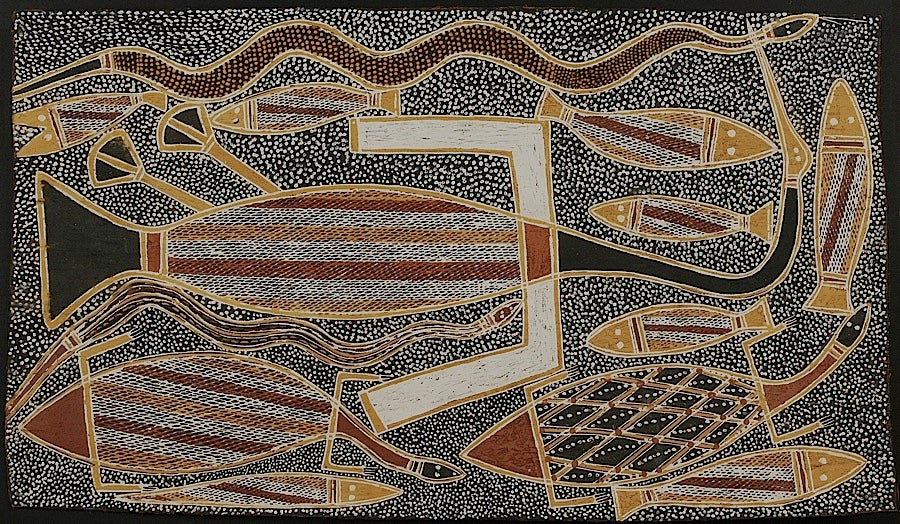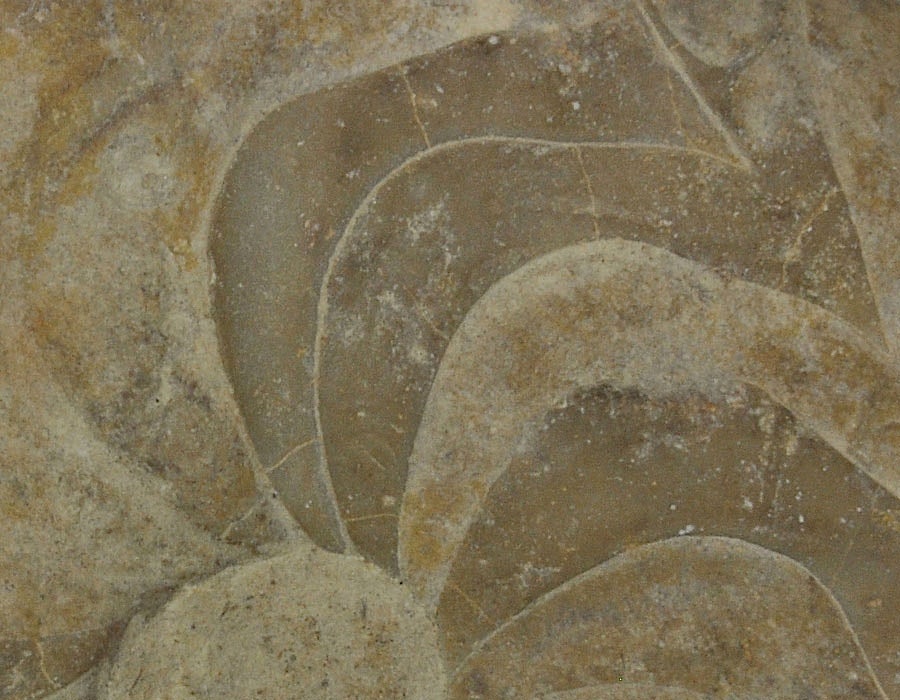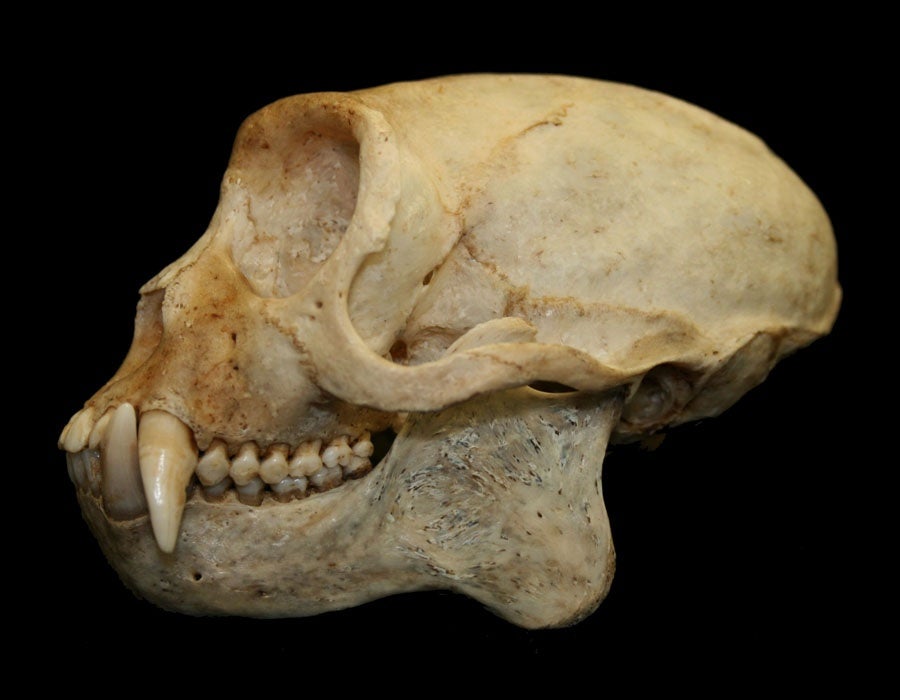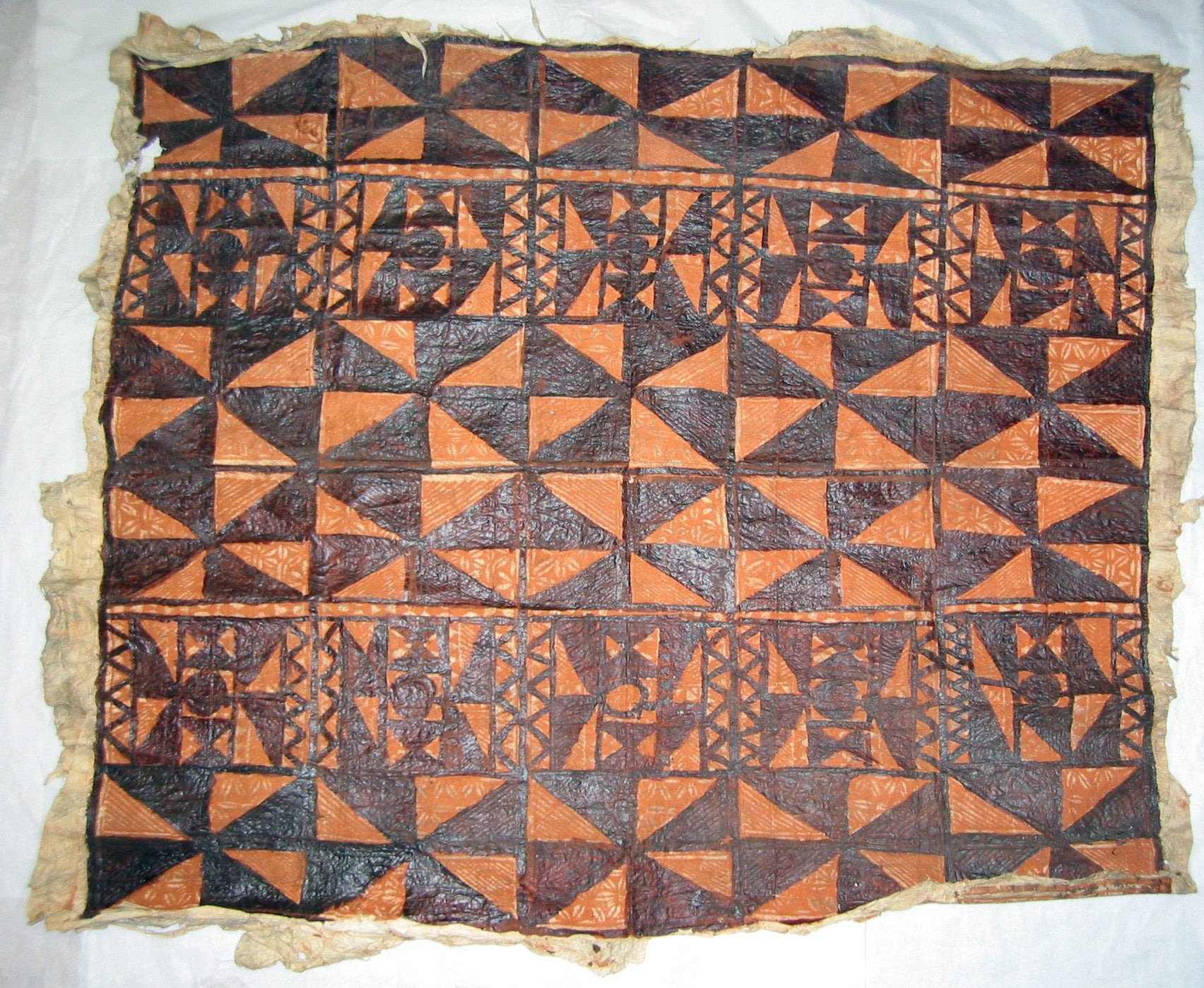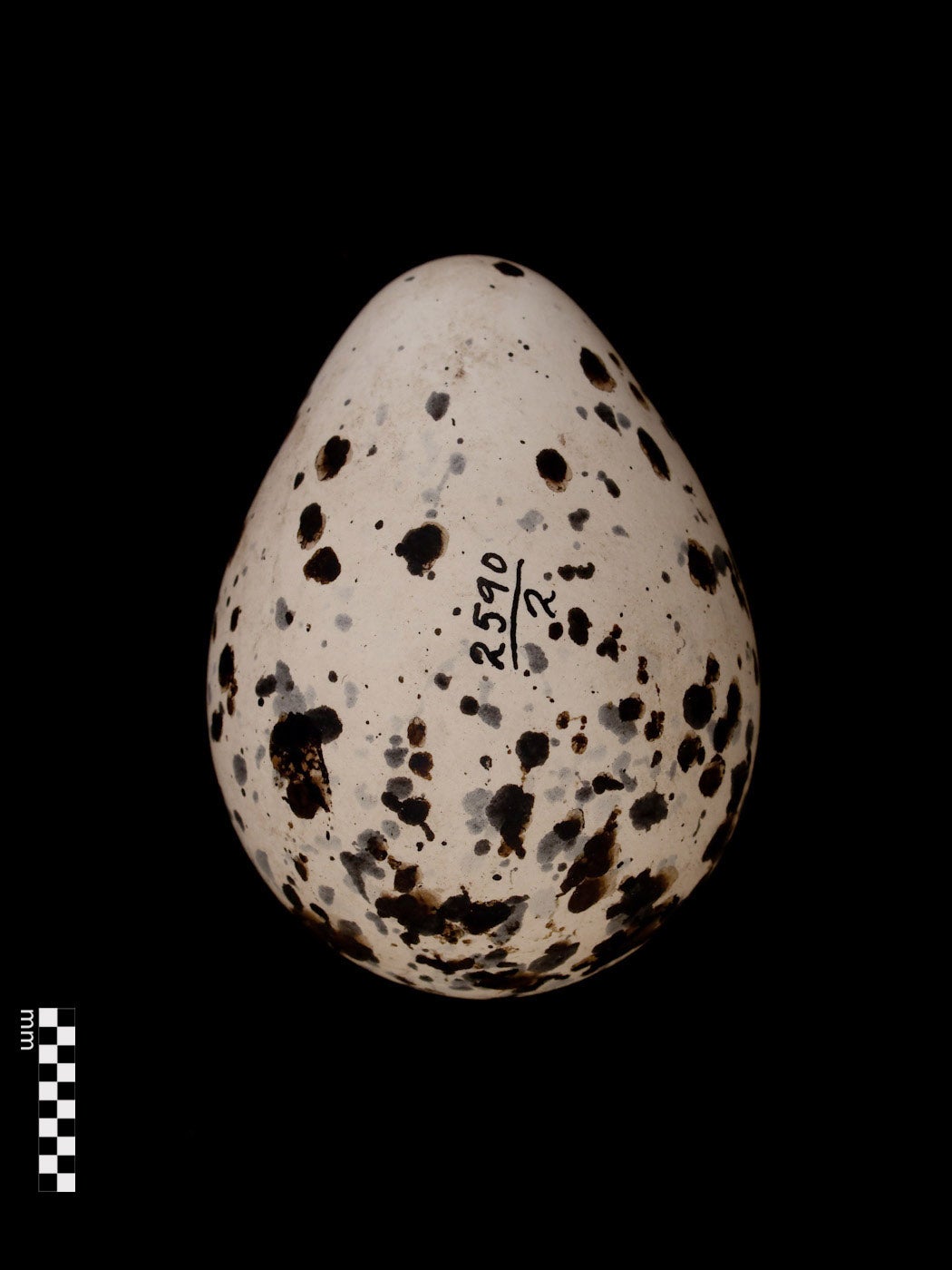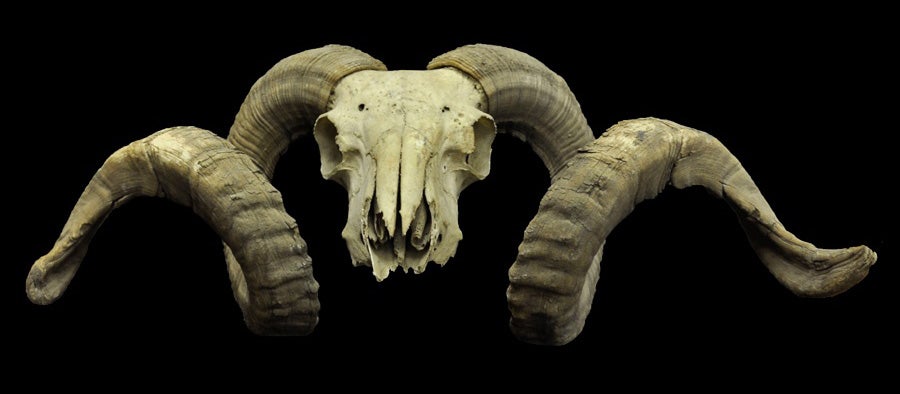Musical instruments throughout the world are played individually, in small groups, or in large orchestras. They often accompany singing and dancing. They are played for entertainment, political events, rituals, and celebrations. Men, women, and children, in cities and villages, in rainforests, deserts, mountains, and islands, play musical instruments of all shapes and sizes.
Musical instruments can be made from wood, metal, bamboo, gourd, clay, stone, skin, leather, silk, gut, vegetation, nylon, and plastic. Sounds are produced by vibrations of these materials, either in the body of the instrument itself, or as membranes, strings, or air columns. These vibrations are caused by physical actions -- when we play musical instruments, we hit, stamp, shake, scrape, rub, squeeze, pluck, bow, blow, suck, or whirl!
The instruments shown here represent a small selection from the Museum of Natural and Cultural History’s collections, some of which were featured in the 2009 exhibition, World Harmony – Musical Instruments from around the Globe. Images © UO Museum of Natural and Cultural History. Production of this gallery received generous funding from The Ford Family Foundation.
Cat. #2-614
Flute, two-chambered duct type
Great Plains, North America. 16.6” long.
Cat. #2-614
Flute, two-chambered duct type, detail
Great Plains, North America. 16.6” long.
Cat. #2-14507
Frame Drum
Alaska, Inuit. 26.5” long.
Cat. #2-14507
Frame Drum detail
Alaska, Inuit. 26.5" long
Cat. #3-731
Panpipes (antara)
Peru, 6.3” long.
Cat. #3-731
Panpipes (antara) Detail
Player blows across beveled edges of tubes.
Cat. #7-431
Hand Drum (kundu)
Papua New Guinea, southern coast. 34.4” long.
Cat. #7-431
Hand Drum (kundu) Detail
Drum head, typically made from from lizard, snake, or opossum skin.
Cat. #7-786
Slit Drum or Slit Gong (paté)
Samoa. 13.2” long.
Cat. #7-786
Slit Drum detail
Held with slit facing up, stick striking slit’s edge.
Samoa. 13.2” long.
Cat. #8-311
Clapper Drum (thod-dam [damaru])
Tibet. 5.2” long.
Cat. #8-311
Clapper Drum (thod-dam [damaru]) detail
The tops of two crania are joined at the crowns, human bone symbolizing the transitory nature of all life.
Cat. #8-480
Jaw Harp and Case (t’xe)
Thailand, Karen. 5.2” long (case).
Cat. #8-480
Jaw Harp and Case (t’xe) detail
Sound imitates rising and falling tonal contours of words in Karen language
Cat. #8-511
Mouth Organ (khaen)
Thailand. 44.3” long.
Cat. #8-511
Mouth Organ (khaen) detail
Bamboo pipes inserted into barrel-shaped hardwood air chamber, sealed with black beeswax.
Cat. #8-1098
Mouth Organ (ladjay)
Thailand, Akha. 17.4” long.
Cat. #8-1098
Mouth Organ Detail
Similar to Thai mouth organ, with fewer bamboo pipes, and gourd air chamber.
Cat. #10-877
Bowl Lyre (krar)
Ethiopia. 28.8” long.
Cat. #10-877
Bowl Lyre Detail
Typically, resonator made from wooden, clay, or metal bowl, covered with goat, sheep, or ox skin; strings of gut, metal or nylon.
Cat. #879
End-blown Flute (washint)
Bamboo; played primarily by shepherds and cowherds.
Cat. #879
End-blown Flute (washint) detail
Bamboo; played primarily by shepherds and cowherds.
Cat. #10-956
“Talking drum” (dundun)
Nigeria, Yoruba. 14.9” long.
Cat. #10-956
Tension cords are squeezed to alter drum’s pitch.
Nigeria, Yoruba. 14.9” long.
Cat. #10-1440
Conical Drum (mbuutu)
Southern Uganda. 14.4” long
Cat. #10-1440
Conical Drum (mbuutu)
Zebra hide here has replaced traditional cow hide, to appeal to tourists.
Cat. #10-1625
Circular Lyre
Kenya. 35” long
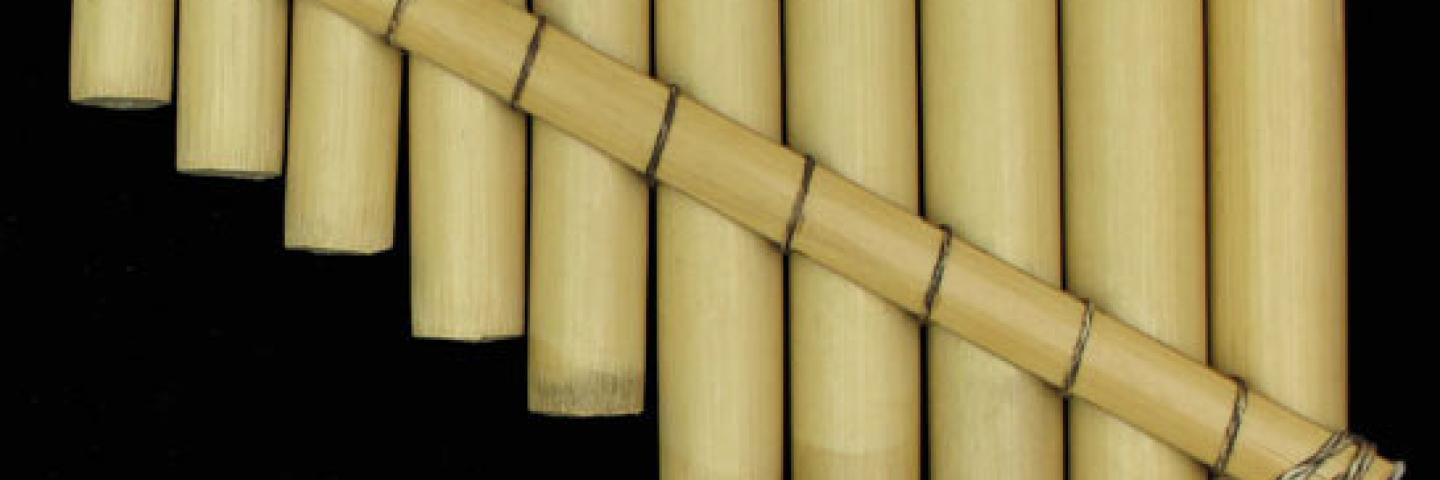
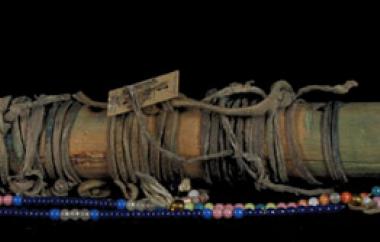
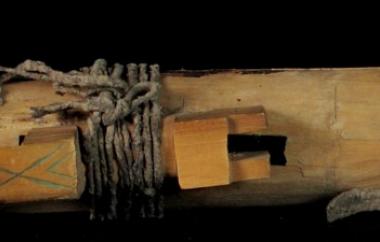
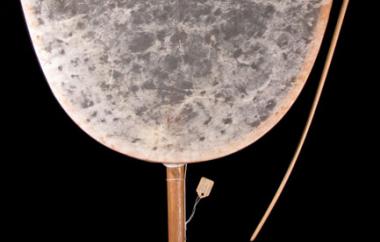
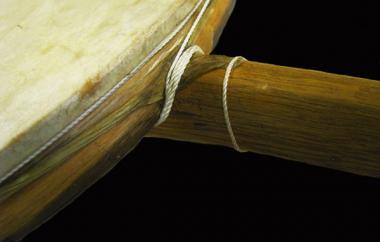
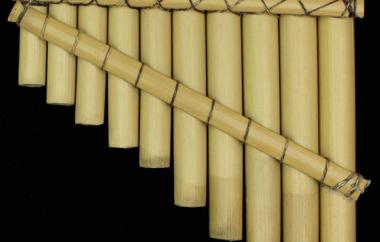
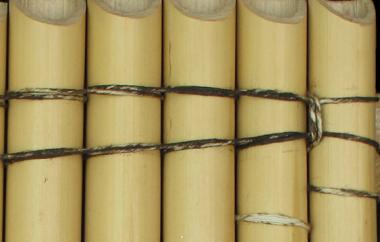
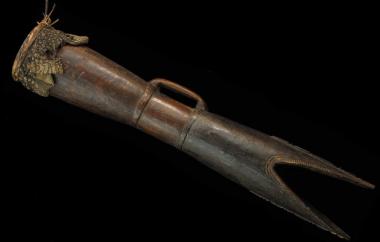
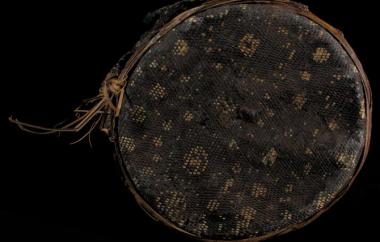
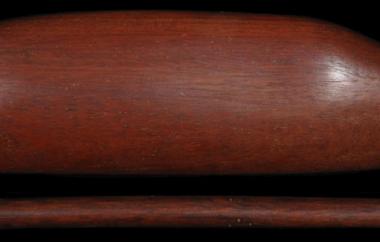
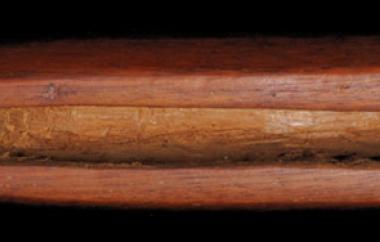
![Clapper Drum (thod-dam [damaru])](/sites/default/files/styles/image_callout_phone_portrait_and_below/public/8-311a.jpg?h=a1a76796&itok=_SftamZZ)
